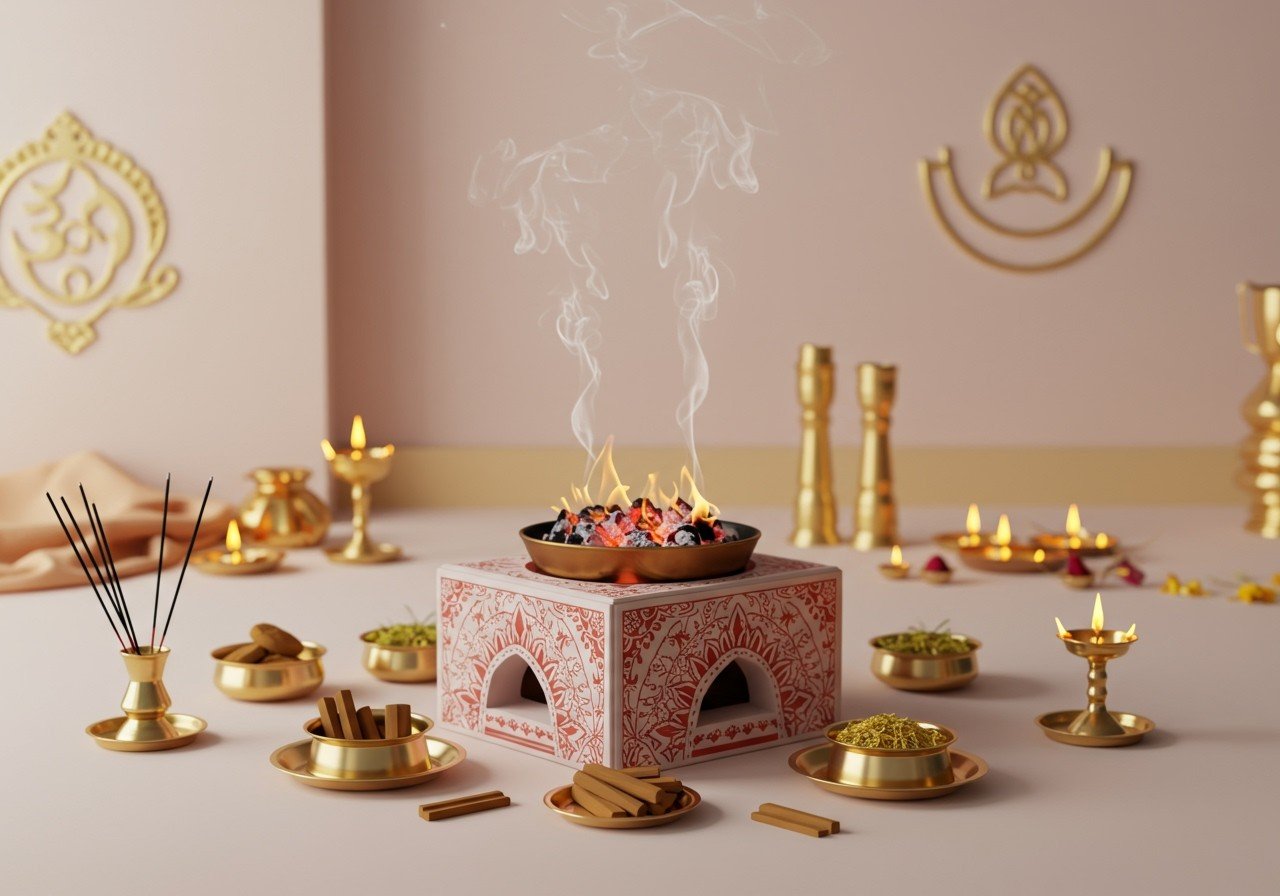
In Indian culture, the Dhuni holds a special place, a sacred fire lighting up rituals and ceremonies for generations. It’s a powerful link to divine energies and the traditions of our ancestors. Understanding its significance helps us keep the sanctity of our rituals alive while making them relevant in today’s world. Creating a Dhuni at home in 2025 beautifully blends modern tools with traditional values, allowing us to connect with our spiritual side in a meaningful way.
Understanding Yudhishthira’s Lineage and the Essence of Dharma
Yudhishthira, revered as the embodiment of Dharma, stands tall in Indian mythology. As the eldest of the Pandavas, he represents truth and righteousness. His divine lineage, connected to the god of Dharma, profoundly shaped his character and the choices he made. This connection deeply influenced his role in the Mahabharata, guiding his moral compass. Just as his divine father embodies Dharma, so too does Yudhishthira’s life reflect this profound principle, leaving an enduring legacy of righteousness. His unwavering commitment to Dharma reminds us of the importance of upholding truth and justice in our own lives.
Materials and Preparations for a Sacred Dhuni
Creating a Dhuni requires specific materials, like certain types of wood, herbs, and oils, each chosen with the ritual’s purpose in mind – be it purification or spiritual upliftment. Sourcing authentic materials online helps preserve the sanctity of the ritual, ensuring a genuine connection with tradition. Preparing the space for a Dhuni is equally important. Cleanliness and a sense of sacredness set the stage for a meaningful experience. Intention and mindfulness are key, focusing on the spiritual aspect of the Dhuni and the positive energy it brings.
Find authentic Guggal for your Dhuni at Poojn.in.
Step-by-Step Guide to Creating a Dhuni
Building a Dhuni at home blends traditional methods with modern convenience. First, a stable foundation is essential for safety. Then, layer the materials in a specific order: wood at the base, followed by herbs, and finally, oils. Lighting the Dhuni with a camphor flame adds traditional significance. Throughout the process, safety precautions are paramount, ensuring the ritual is conducted with the utmost respect and mindfulness. This careful approach maintains the Dhuni’s energy and focus, allowing for a deeper spiritual connection.
Explore our handmade Dhuno pots at Poojn.in.
Significance and Benefits of Performing a Dhuni
Performing a Dhuni offers a wealth of benefits. From improved concentration and deep relaxation to heightened spiritual awareness, it’s a practice that nourishes the mind, body, and soul. It purifies the surroundings, dispelling negative energies and creating a peaceful sanctuary within your home. The Dhuni also serves as a conduit for offerings to deities and ancestors, strengthening the bonds with the divine. It’s a beautiful way to bring people together, fostering unity and shared purpose. More than just a ritual, the Dhuni helps preserve our rich cultural heritage, linking the traditions of the past with the practices of today. Personal experiences often reveal its transformative potential, bringing a sense of peace and connection to something larger than ourselves.
Creating a Dhuni at Home: Where Tradition Meets Modern Convenience
Understanding the Dhuni’s Deeper Meaning
The Dhuni is more than just fire; it’s a powerful symbol of purification, meditation, and a bridge to the divine. It invites positive energy into our homes, creating a sacred space for reflection and connection. Traditionally, the Dhuni ceremony involves chanting mantras, offering prayers, and making offerings as the fire crackles and dances, creating a mesmerizing and spiritually uplifting experience. In 2025, creating a Dhuni at home beautifully integrates ancient wisdom with modern living, making this sacred practice accessible and convenient.
Planning and Preparation: Setting the Stage
Choosing the right location is crucial. Ensure the fire pit is at least 10 feet away from anything flammable, safeguarding your home and loved ones. Proper ventilation is essential, especially for indoor Dhunis, to allow the sacred smoke to flow freely and safely. A well-ventilated space ensures a comfortable and respectful environment for your ritual.
For the size of your Dhuni, a diameter of 36 to 44 inches works well for gatherings, creating a focal point for shared spiritual practice. The ideal height is around 12-14 inches, making it easy to tend and maintain. While the traditional circular shape is timeless, square or rectangular designs are also gaining popularity, offering a modern aesthetic.
Materials You’ll Need:
- Paver bricks (50-100): These form the sturdy structure of your Dhuni.
- Trapezoidal pavers (optional): These help create a tighter fit, especially for circular pits.
- Garden spade: Essential for digging and leveling the ground.
- Rubber mallet: Helps set the bricks firmly in place.
- Grass marking paint: Useful for outlining the Dhuni’s perimeter.
- Hand tamper: Compacts the base for stability.
- Metal fire pit bowl (optional): An added layer of safety for containing the fire.
- Crushed gravel: Provides drainage and a stable foundation.
- Leveling sand: Ensures an even surface for the bricks.
- Construction adhesive: Secures the bricks together for a lasting structure.
- Fire bricks: Line the interior to protect the outer structure from the heat.
Constructing the Dhuni: A Step-by-Step Approach
Mark and Excavate: Outline the Dhuni’s perimeter with the grass marking paint and excavate to a depth of about 7 inches. A level surface is key for a stable structure.
Base Preparation: Compact the soil firmly using the hand tamper. This creates a solid foundation. Add a 5-inch layer of crushed gravel, wet it lightly, and compact it thoroughly for optimal drainage.
First Row of Blocks: Carefully place the first row of paver bricks directly onto the prepared base. Ensure they fit snugly together and are perfectly level, setting the stage for a strong and beautiful Dhuni.
Subsequent Rows: Continue adding rows of bricks (typically 2-3 rows), repeating the process. Each row builds upon the last, creating a sturdy and well-defined structure. Use the rubber mallet to gently tap the bricks into place, ensuring a tight fit.
Inner Fire Brick Lining: Line the inner walls of the Dhuni with fire bricks. This crucial step protects the outer structure from the intense heat of the fire, ensuring the longevity of your Dhuni.
Backfill: Fill the gaps around the fire pit with the excavated soil, creating a seamless and finished look. This helps integrate the Dhuni into your surroundings.
Performing the Dhuni Ritual: Connecting with the Sacred
Dhuni Samagri (Ingredients):
Gather the essential ingredients for your Dhuni ritual: dried herbs, resins, ghee, sandalwood, and camphor. These sacred items can be easily found online, ensuring you have everything you need for a meaningful ceremony. Explore our range of Pooja kits and online guides for a complete experience.
Creating the Fire: Place your chosen Dhuni Samagri in a fireproof container or a dedicated Dhuni pot. Find beautiful terracotta lamps at Poojn.in. Light the mixture carefully, allowing the fragrant smoke to fill the space, creating a sacred atmosphere.
Setting Intentions: Before lighting the fire, take a moment to reflect on your intentions. This mindfulness adds depth and meaning to your ritual, connecting you to the spiritual essence of the Dhuni.
Mantras and Prayers: Traditionally, Dhuni ceremonies incorporate specific mantras and prayers. You can begin with “Sri Guru Bhaha,” followed by chanting “Saya” a few times, and then recite a mantra from the Gita, infusing the ritual with ancient wisdom.
Safety Precautions: Protecting Your Sacred Space
Ensure your chosen container is heat-resistant, preventing any accidents. Adult supervision is crucial, especially with children and pets present, to maintain a safe and respectful environment. Open windows to ensure good ventilation, allowing the sacred smoke to circulate freely and prevent any build-up. Always place your fireproof container on a non-flammable surface, taking every precaution to protect your home and loved ones.


